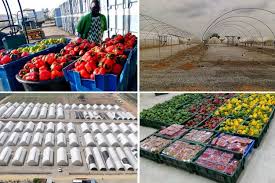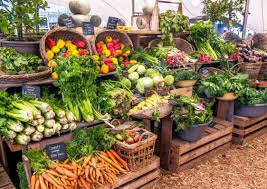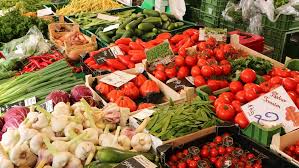In the previous articles, the focus was on market structure, conduct, and performance. It was highlighted that business firms behave according to the dictates of the market structure. Another critical driving force is how much return they make on top of the costs of their operations. This article and the subsequent two will address marketing margins, costs, and efficiency.
Read Also: 23 Medicinal Health Benefits of Citrus latipes (Khasi Papeda)
A. Marketing Margin

Marketing margin refers to the difference in prices paid for a commodity at different stages of the marketing system. Time, place, form, and possession are important factors that affect marketing margin.
Therefore, marketing margin represents the difference in price of a given commodity at different stages of time, form, place, and possession as it moves from the primary producer to the ultimate consumer.
For example, the difference between the price paid to the primary producer (farmer) for a 100kg bag of paddy and the wholesale or retail price of the milled rice derived from that paddy represents the market margin.
Marketing margin can be considered from two perspectives:
a. Marketing margin is the difference between the price paid by consumers and that received by producers.
b. Marketing margin is the outcome of the demand for and supply of such services.
Under the first definition, marketing margin is simply a difference between the primary and derived demand for a particular product. For example, if consumers want to eat bread, the demand for bread is primary demand, while the demand for wheat needed to produce bread is derived demand.
Similarly, the supply of wheat grain is primary supply, while the supply of bread is derived supply. The retail price is established where the primary demand and derived supply intersect, while the farm level price is established where the derived demand and primary supply curves intersect. The difference between the retail price and farm level price constitutes the marketing margin.
The second definition considers marketing margin as the price of a collection of marketing services. This price is a function of the demand for and supply of marketing services, which include items like assembly, processing, transportation, and retailing.
Marketing margin varies from one product to another because the marketing services required also differ. Some products, especially highly perishable ones like fruits, vegetables, and dairy products, need specialized handling, storage techniques, and processing.
Read Also: 10 Medicinal Health Benefits Of Orange (Citrus sinensis)
B. The Size of the Marketing Margin

The magnitude of the total marketing margin reflects the product characteristics’ impact on the complexity of the marketing functions performed as the product passes through the marketing system. Thus, the marketing margin varies from product to product, depending on the following characteristics:
1. Processing: Products that need to be processed into different forms as desired by consumers usually attract higher marketing margins. The more work involved in changing the product form and providing services to satisfy the consumer, the higher the marketing charges.
2. Perishability: Marketing perishable products like fruits and vegetables is typically more costly than non-perishable products because of greater product deterioration. Expensive refrigeration may be needed to transport perishables through different stages in the marketing channel. For example, transporting frozen fish from Nigerian ports to the northern regions requires specialized refrigerated vans.
3. Bulkiness in Relation to Value: Some products require more space during transportation and storage, which inevitably increases marketing charges. Food grains like maize, sorghum, cowpea, and millet are bulky and often cost up to N100 per 100kg bag to transport from one market to another, depending on the distance.
4. Extreme Seasonality of the Product: Seasonal commodities require facilities that may only be partially used during other times of the year. If these commodities are also perishable, higher marketing costs arise. For products harvested in a specific season, storage might be necessary, leading to increased storage and handling costs.
5. Institutional Factors: Institutional factors, such as vertical integration or a highly organized market information system, can influence the size of the marketing margin. Vertical integration of marketing firms could lower the marketing margin by shortening the marketing chain.
Conversely, it could result in a higher marketing margin if the firms gain market power and control over consumer prices. A highly organized system of accurate market information might reduce the marketing margin by keeping consumers aware of prevailing market prices.
C. Incidence of Marketing Margin Changes
Marketing margin is not static and changes over time due to its dependence on the intersection of primary demand and derived supply, as well as derived demand and primary supply. Any shift affecting the demand and supply relations will influence the marketing margin.
Changes in the marketing margin can impact the price received by producers, the price paid by consumers, or both. The effect depends on the slope and elasticity of the demand and supply curves.
If the slopes of the demand and supply curves are equal, a change in marketing margin will result in equal but opposite changes in retail and farm prices. If the demand curve is steeper or less elastic than the supply curve, price changes at the consumer level will be greater than at the producer level.
On the other hand, if the supply curve is steeper and less elastic than the demand curve, the price change effect will be larger at the producer level. Most farm products tend to have more inelastic supply than demand, meaning that changes in marketing margin often have a greater impact at the farm level than at the retail level.
Do you have any questions, suggestions, or contributions? If so, please feel free to use the comment box below to share your thoughts. We also encourage you to kindly share this information with others who might benefit from it. Since we can’t reach everyone at once, we truly appreciate your help in spreading the word. Thank you so much for your support and for sharing!

